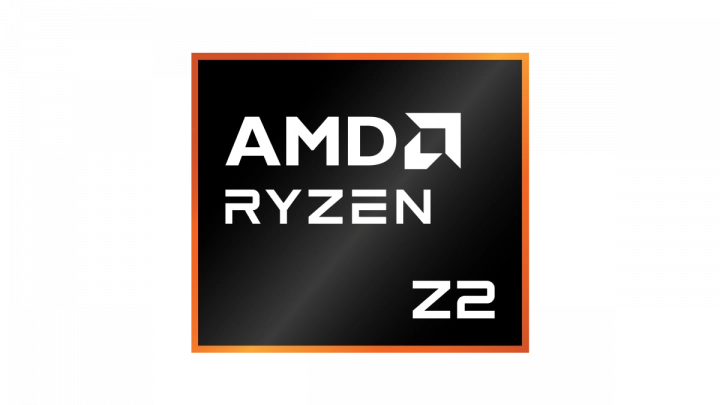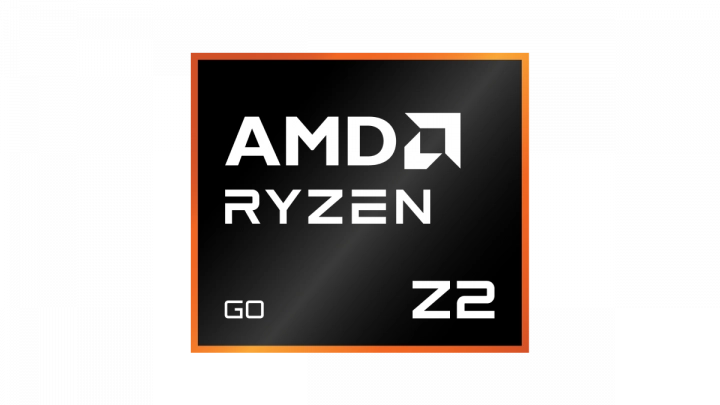There was a lot going on at CES 2025. From what AMD revealed, we’ve already covered Ryzen AI Max graphics and processors (codenamed Strix Halo), which bring unprecedented levels of performance to notebook processors with integrated powerful graphics and 256-bit unified memory. But the Strix Halo is too heavy for the increasingly popular category of gaming handhelds. For those, the company released something else – the Ryzen Z2 series of processors.
Ryzen Z2 follows the Z1 series from 2023, again these are processors optimized directly for the category of handheld devices, based on the concept popularized by Steam Deck. However, several generations of chips from the line of notebook APUs will actually appear under the designation Z2.
Ryzen Z2 Extreme
The top model Ryzen Z2 Extreme is based on the latest technology and should therefore be a real step up from the current top model Ryzen Z1 Extreme. It uses the 4nm “Strix Point” SoC from the Ryzen AI 300 processors introduced this summer, which already uses the Zen 5 architecture.
However, this handheld version has only eight cores enabled, i.e. 4× Zen 5 and 4× Zen 5c, a total of 16 threads. According to the specifications, the CPU should have only 16 MB of L3 cache active, but it is not clear how it is divided (whether 8 + 8 MB for the Zen 5 and Zen5c cores, or maybe 12 + 4). This means that the cache part is disabled, unless there is an error in the specifications (which is not excluded). In theory, this could be an optimization to reduce CPU consumption in gaming workloads while running on battery in favor of the GPU. The clock speed of the processor part is 2.0 GHz in base and up to 5.0 GHz in boost.
The graphics part does not directly have a product name, in the specifications it is only called Radeon Graphics. However, it has 16 CUs with RDNA 3.5 architecture, i.e. 1024 shaders. We do not know the maximum frequency (in Ryzen AI 300 it is up to 2900 MHz, here it can be lower). It is possible that DisplayPort 2.1 UHBR10 can also be provided at the output, but such detailed specifications have not yet been disclosed. We assume that the SoC should be paired with LPDDR5X-8000 memory (128-bit wide, which gives a throughput of 128 GB/s, but this is not mentioned in the specifications yet).
The processor has a TDP of 28W, which is probably more indicative. In handheld consoles, it will usually be set according to the capabilities of the cooler and the required battery life. The range in which cTDP can be set is 15 W to 35 W.
Ryzen Z2
The regular Z2 model without the Extreme attribute is no longer based on the latest generation chip, but on the Phoenix/Hawk Point SoC originally from the Ryzen 7040/8040. However, it has a fully active configuration, so it is not a rebranding of the ordinary Z1, but essentially a similar model of the Z1 Extreme under a new name. It is also a 4nm chip, so the energy efficiency might not be significantly worse than the Extreme variant, although the overall performance will be lower.
The processor part has eight cores / 16 threads of Zen 4 and 16 MB of L3 cache, which should all be in one CCX block. Clock is 3.3-5.1 GHz. It is interesting that the maximum single-thread boost is slightly higher, but the Zen 5 in the Z2 Extreme model will probably overcome it through better performance at 1 MHz of the new architecture.
The graphics part has 12 CUs (768 shaders) of the RDNA 3 architecture, but again we are not told the frequencies, so it is not clear whether it will achieve equivalent performance to the Z1 Extreme model, or slightly lower.
The consumption is again with a default TDP of 28 W and is adjustable in the consumption range of 15 W to 30 W (the maximum is therefore a little smaller). With a much larger GPU, the Z2 should be vastly superior to the original non-Extreme Z1.
Ryzen Z2 Go
The latest model is apparently intended for cheaper devices. The Ryzen Z2 Go version uses an older 6nm SoC with the codename Rembrandt, which went on the market in 2022. It is only a quad-core with eight threads and the Zen 3+ architecture. This corresponds to a lower clock speed, 3.0-4.3 GHz, and the processor has an 8MB L3 cache. The processor part will therefore be weaker, the question is whether it will be a problem for handheld gaming, which mainly depends on the performance that the iGPU can provide in a low consumption envelope, perhaps only somewhere around 15 W.
Ryzen Z2 Go’s advantage could be that its graphics part is actually not that much worse compared to the Z2 model on paper, because the RDNA 2 architecture has already reached Rembrandt and the Z2 Go processor has a full configuration with 12 CU / 768 shaders. But we don’t know at what frequency. The adjustable cTDP range is also 15-30W, the default TDP is again 28W.
In theory, this processor should not be hindered by older architectures so much, so considering the price, the device could be quite interesting. The performance in games will probably be reduced the most by the 6nm production process itself, which will not allow such high GPU clocks with the same consumption, and therefore the sustainable performance when playing on battery will be lower. Compared to the Ryzen Z1, which had an iGPU with only 256 shaders (4 CU) RDNA 3, the Z2 Go could be a much better solution despite the use of an older chip.
Equipment in Q1 2025
The Z2 and Z2 Extreme chips should theoretically have a compatible case with the Ryzen Z1 Extreme (and similar power consumption), so they should fit into similar chassis as the previous generation, and even theoretically use the same motherboards or PCBs. Perhaps there will be a wave of updated devices, but manufacturers will probably combine the launch of new handhelds with the new generation of processors. Those using the Ryzen Z2 Go will probably more often than not have their own PCB when the Rembrandt APU can theoretically be compatible – its FP7 and FP7r2 pinout can theoretically be compatible with the newer Phoenix and Strix Point generations (if the Ryzen Z2s use this design and not exclusively the newer FP8 case ).
According to AMD, the first devices with these processors should go on sale in the first quarter of the year (of course, others may also appear later). These processors could form the backbone of AMD’s offerings in this area for the next year or two. We do not yet know when AMD will release the next generation of APUs, on whose chip the new generation of handheld SoCs could be based.
Source: www.cnews.cz




